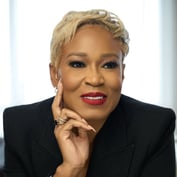NEW YORK (HedgeWorld.com)–Hoping to attract the middle class investor, Quadriga Chief Executive Christian Baha has turned to celebrities. In January, Grand Prix racing champion Niki Lauda pitched Quadriga’s managed futures certificate for the German market.
This month, Mr. Baha invited Bill Clinton to a store opening in New York, according to published reports–part of a plan to sell Quadriga Superfund to Americans who have as little as US$45,000 in assets.
Mr. Baha himself, looking sophisticated in an all-black outfit, has appeared in ads on cable television channels. Of Austrian background, he operates out of Monte Carlo. His firm, now renamed Superfund Asset Management Inc., is domiciled in Grenada.
Americans invested about US$70 million in Superfund in response to an offer in 2002.
Mr. Baha, wanting to get at least another US$130 million, filed with the Securities and Exchange Commission to make a new attempt to sell his managed futures vehicle to the public and started a broad marketing campaign.
The firm manages US$1.7 billion in assets worldwide. Quadriga AG has been available in the European mass market since March 1996 and boasts an average annual return of 22%. The U.S. version, introduced in November 2002, made 17% a year since launch.
Those numbers are net of fees, and therein may lie a wonder. Superfund fees are high even by hedge fund standards. The American offering charges 25% for performance, 1.85% for management, 4% as a sales commission, 1% for organization and offering expenses and another 0.15% for operating expenses.
That doesn’t count brokerage fees, which add 3.75%. To break even, Mr. Baha’s trading system has to rake in at least 8.75%– celebrity-studded publicity campaigns don’t come cheap, and neither does a lot of trading.
“There’s a sucker born every minute,” said Ira Kawaller, a futures manager in Brooklyn, N.Y. “This isn’t to say that they don’t have a program that may very well yield impressive results,” he added. As it happens, his own fund, Kawaller & Company LLC, also has an average annual return of 22% over a five-year period.
Soros, Buffett and Ford
Mr. Kawaller pointed out that it’s important to look at month-to-month volatility, not just returns. Managed futures programs typically are highly volatile. Superfund’s performance is less impressive when the high annual standard deviation (33.5%) is factored in; the Sharpe ratio is 0.52.








 March 23, 2005 at 07:00 PM
March 23, 2005 at 07:00 PM










